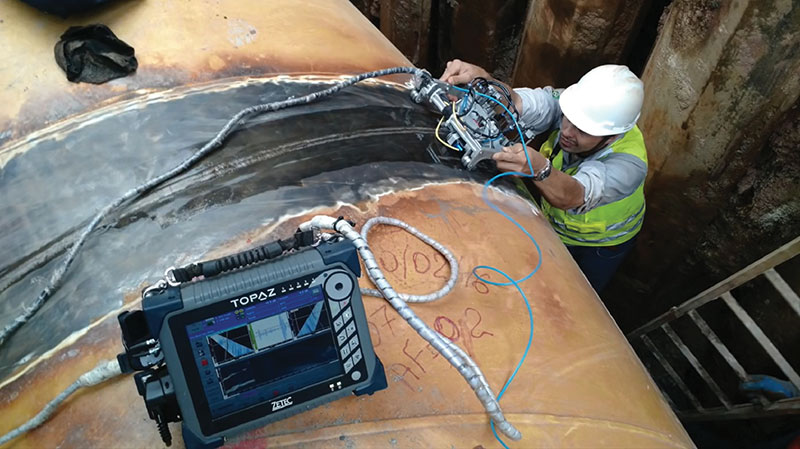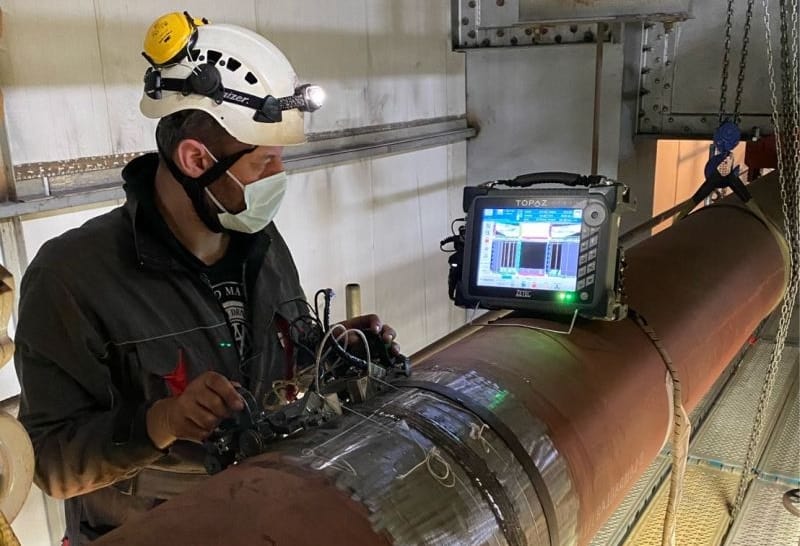Accuracy Matters: Relied On Pipeline Welding Inspection Services for Critical Tasks
Accuracy Matters: Relied On Pipeline Welding Inspection Services for Critical Tasks
Blog Article
Comprehensive Overview of Pipe Welding Assessment Treatments
Pipe welding assessment procedures play an essential duty in assuring that welded connections fulfill strict market standards and requirements. From precise pre-welding inspections to thorough post-weld evaluations, a distinct inspection procedure is vital for maintaining the architectural soundness of pipes.
Pre-welding Evaluation Preparations
Prior to beginning the welding process, complete pre-welding examination prep work are necessary to make certain the honesty and top quality of the weld joint. These preparations include a thorough assessment of the products to be bonded, the welding devices, and the work atmosphere. To start with, the materials have to be evaluated for any issues, pollutants, or disparities that can endanger the weld. This consists of checking for proper material grades, measurements, and surface conditions. Pipeline Welding Inspection. In addition, the welding tools needs to be examined to confirm that it remains in excellent working problem, adjusted correctly, and suitable for the certain welding process. Any type of concerns with the tools should be dealt with without delay to stop issues in the weld. Last but not least, the workplace should be reviewed for sanitation, proper air flow, and safety measures to ensure a conducive setup for the welding operation. By conducting extensive pre-welding assessment prep work, prospective issues can be identified and solved beforehand, causing high-grade and reliable weld joints.
Welding Procedure Certification
Thorough pre-welding assessment preparations lay the structure for the crucial procedure of Welding Procedure Certification, ensuring the stability and quality of the weld joint. Welding Procedure Credentials (WPQ) is a crucial action in the welding procedure that involves testing and licensing welding procedures to assure they satisfy particular criteria and requirements. The WPQ process commonly consists of welding procedure spec growth, welding procedure qualification screening, and documentation of the results.
Throughout welding treatment specification development, crucial information such as the welding procedure, welding products, joint style, and welding specifications are defined to develop a detailed treatment. Ultimately, welding treatment qualification testing is performed to confirm the proposed procedure's stability. This screening frequently includes welding test vouchers that undergo various mechanical and non-destructive tests to examine the weld's high quality and adherence to the defined criteria.
In-process Weld Inspection
Throughout the welding procedure, in-process weld inspection plays an important function in making certain the top quality and stability of the weld joint - Pipeline Welding Inspection. This kind of evaluation involves keeping track of the welding specifications, evaluating the weld bead formation, and spotting any potential defects or stoppages as they take place. By performing in-process weld examinations, welding drivers can immediately deal with any type of concerns that may occur, thus check preventing further issues and making certain that the last weld meets the required requirements
Typical methods used for in-process weld assessment consist of visual evaluation, fluid penetrant screening, magnetic particle testing, ultrasonic screening, and radiographic screening. Visual inspection is usually the initial step in the procedure, enabling inspectors to aesthetically assess the weld for surface area irregularities such as fractures, porosity, or incomplete combination. Advanced techniques like ultrasonic screening and radiographic screening provide in-depth insights right into the internal framework of the weld, making sure that there are no hidden flaws that could jeopardize the read what he said weld joint's strength and integrity. On the whole, in-process weld assessment is essential for preserving the top quality and dependability of bonded pipelines.
Non-destructive Screening (NDT)
Non-destructive Testing (NDT) is an essential technique utilized in pipe welding inspection to evaluate the stability of weld joints without creating damages to the bonded framework. By utilizing various NDT strategies, examiners can examine the top quality of welds and identify any problems or suspensions that might endanger the structural soundness of the pipeline. Typical NDT approaches used in pipeline welding evaluation include Radiographic Testing (RT), Ultrasonic Testing (UT), Magnetic Particle Evaluating (MPT), Liquid Penetrant Testing (LPT), and Visual Testing (VT)
RT involves using X-rays or gamma rays to create photos of the inner framework of the weld, permitting assessors to identify flaws such as porosity, splits, or insufficient combination. UT utilizes high-frequency sound waves to discover defects under the surface of the weld, offering detailed details concerning the dimension and area of flaws. MPT and LPT are utilized to identify surface-breaking defects by using magnetic fragments or penetrant fluids to the weld location. In addition, VT includes aesthetic examination of welds to identify any kind of noticeable blemishes.
Post-weld Examination and Paperwork


Paperwork of post-weld examination findings is essential for preserving quality assurance records and ensuring conformity with sector requirements and regulations. In-depth reports should include details about the examination methods utilized, the location and nature of any kind of flaws found, and any kind of corrective activities taken - Pipeline Welding Inspection. Appropriate documents not only offers as a document of the weld's quality but also aids in future upkeep and inspection processes
Final Thought

To conclude, pipeline welding assessment procedures play an important duty in ensuring the high quality and honesty of welds. From pre-welding evaluations to post-weld documents, each action is important in keeping the safety and performance of pipes. By following well established treatments and conducting comprehensive examinations, potential problems can be determined and resolved prior to they lead to pricey repairs or failings. On the whole, adherence to appropriate assessment methods is key to you can try this out the success of pipeline welding jobs.
From meticulous pre-welding inspections to comprehensive post-weld analyses, a distinct examination procedure is necessary for preserving the structural stability of pipes. By performing in-process weld examinations, welding operators can immediately attend to any problems that may arise, thereby making certain and preventing more flaws that the final weld fulfills the required specs.
Common approaches utilized for in-process weld evaluation consist of aesthetic evaluation, liquid penetrant screening, magnetic bit testing, ultrasonic screening, and radiographic testing.Non-destructive Screening (NDT) is a crucial method used in pipeline welding examination to examine the integrity of weld joints without creating damage to the bonded structure. Post-weld inspection entails different methods to assess the welds for defects, consisting of visual examination, dye penetrant screening, magnetic particle testing, ultrasonic screening, and radiographic testing.
Report this page